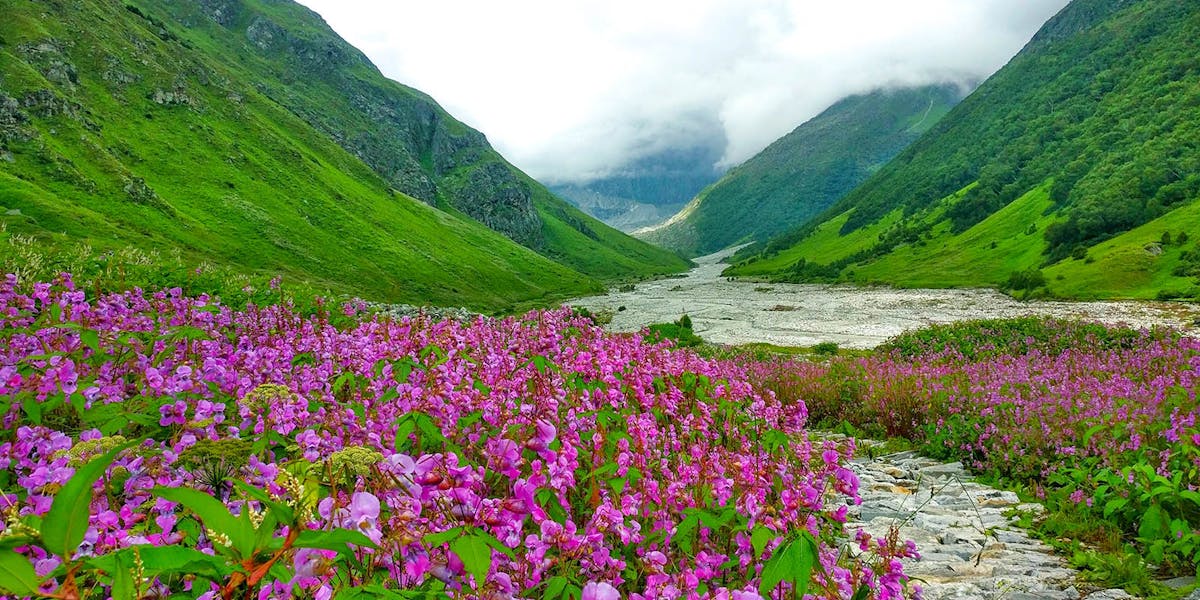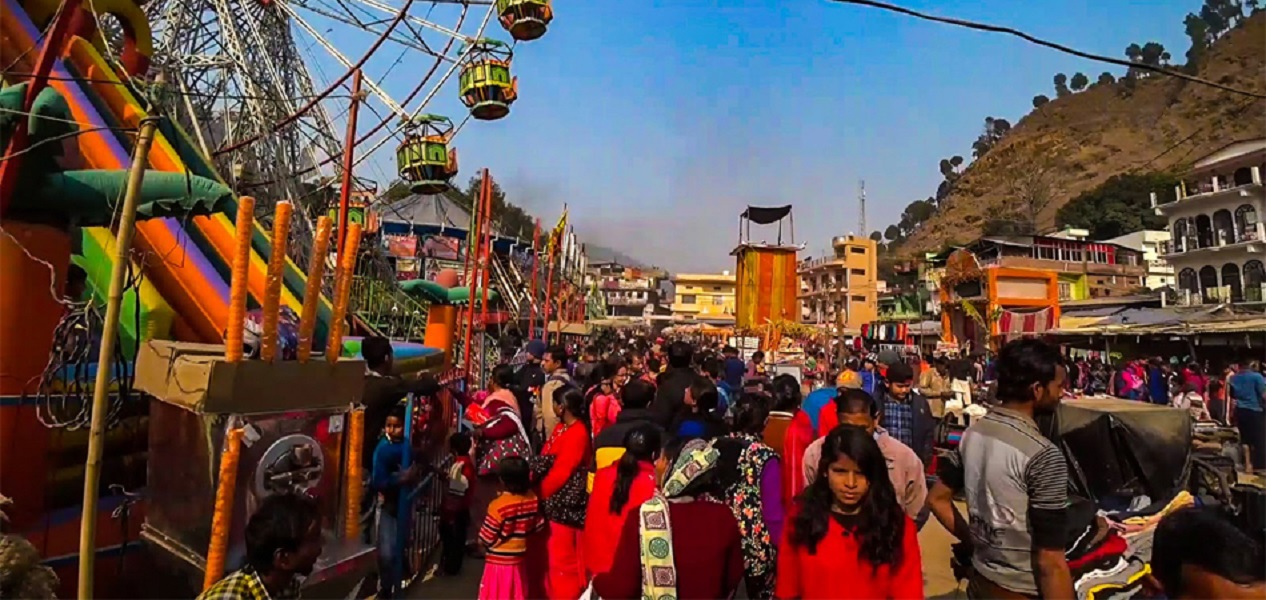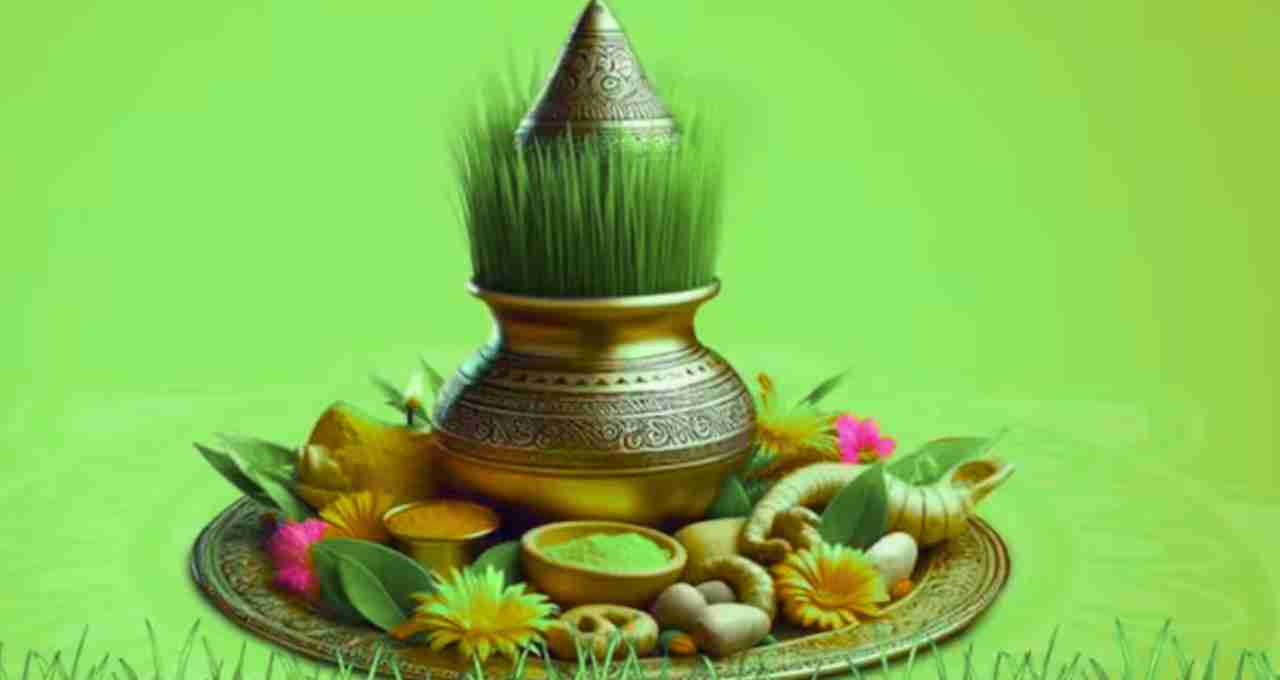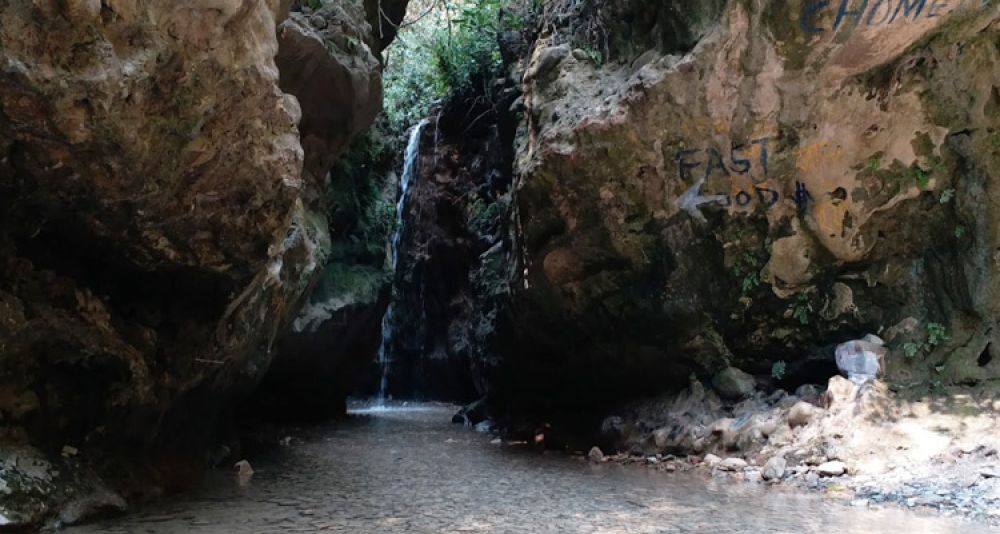

Uttarakhand, located in the Himalayan region of northern India, is a state of breathtaking natural beauty, spiritual significance, and rich cultural heritage. Known as "Devbhumi" or "The Land of Gods," it was carved out of Uttar Pradesh on November 9, 2000. The state is home to some of Hinduism's most sacred pilgrimage sites, including the Char Dham, and boasts incredible biodiversity with numerous national parks and wildlife sanctuaries. From the capital Dehradun to the holy towns of Haridwar and Rishikesh, and from the skiing destination Auli to the Valley of Flowers, Uttarakhand presents a perfect blend of spiritual traditions and adventure tourism. The state's traditional arts, folk music, and unique Garhwali and Kumaoni cultures are recognized for their distinct identity, while its pristine natural environment makes it an ecological treasure of India.

Uttarakhand stands as a testament to the rich cultural heritage and historical significance of the Himalayan region. The state's history dates back to ancient times, with references found in Vedic scriptures and Hindu epics. The name "Uttarakhand" means "Northern Land," reflecting its geographical position and spiritual importance in Hindu mythology. The region has been mentioned in ancient texts as Kedarkhand and Manaskhand, establishing its sacred status for millennia.
The region was historically divided into two main cultural zones: Garhwal and Kumaon, each with its own dynasty and cultural traditions. These Himalayan kingdoms developed distinct identities characterized by their languages, customs, and architectural styles. Uttarakhand maintained its cultural autonomy through various periods of history until it came under British rule, and later became part of Uttar Pradesh before achieving separate statehood.
Uttarakhand has a rich tradition of folk arts, music, and dance. The state is known for its unique folk dance forms like Langvir Nritya, Barada Nati, and Jhora. The traditional music, particularly the folk songs of Garhwal and Kumaon, reflect the deep connection between the people and their natural environment. The state's architectural heritage includes ancient temples with distinctive Himalayan architecture.
The struggle for a separate Uttarakhand state gained momentum in the 1990s, with various social and environmental movements advocating for recognition of the region's distinct identity and ecological significance. After years of peaceful agitation and political mobilization, Uttarakhand became the 27th state of India on November 9, 2000.
The cultural legacy of Uttarakhand is rich and diverse, with strong traditions in music, dance, art, and crafts. The state is famous for its wood carving, woolen textiles, and traditional jewelry. The traditional knowledge systems related to herbal medicine, agriculture, and environmental conservation offer valuable resources for sustainable development.
Today, Uttarakhand takes immense pride in this heritage of cultural richness and environmental significance. The state's formation represents the recognition of its unique Himalayan identity within the Indian federation. The values of environmental stewardship, community living, and cultural diversity established by traditional practices continue to shape Uttarakhand's identity in the modern era.
The legacy of Uttarakhand's Himalayan kingdoms and cultural traditions is not just historical; it continues to inspire contemporary Uttarakhandi identity. The Garhwali and Kumaoni languages, with their rich oral traditions, remain powerful symbols of cultural pride. The traditional knowledge systems related to forests, water management, and sustainable agriculture offer valuable lessons for environmental conservation in the modern context.
Uttarakhand is known for its remarkable linguistic diversity, reflecting its rich cultural heritage and geographical variations. The state's language landscape showcases its unique position as home to distinct Pahari languages alongside Hindi, creating a fascinating linguistic tapestry that represents the region's cultural richness and Himalayan identity.
Hindi is the official language of Uttarakhand and serves as the primary language for administration, education, and inter-community communication. It is widely spoken across the state and acts as a lingua franca between different linguistic communities.
The languages of Uttarakhand reflect its unique cultural identity as a Himalayan state with distinct regional traditions. While Hindi serves as the administrative language and lingua franca, the numerous Pahari languages showcase the state's incredible diversity. This linguistic richness truly mirrors Uttarakhand's spirit of cultural harmony and preservation of Himalayan identities while embracing broader national integration and development.
Uttarakhand is a state where religious festivals, harvest celebrations, and nature worship coexist in perfect harmony. The festivals here reflect the state's deep connection with the Himalayas, agricultural cycles, and spiritual traditions, creating a vibrant tapestry of celebrations throughout the year that showcase Uttarakhand's unique identity as the Land of Gods where ancient traditions thrive in the lap of nature.
Makar Sankranti, known as Uttarayani in Uttarakhand, is one of the most important festivals celebrated with great enthusiasm across the state. This festival marks the transition of the sun into Capricorn and the beginning of longer days. Uttarayani celebrates the agricultural cycle and the changing seasons in the Himalayas. The festival reflects the deep connection between the people of Uttarakhand and their natural environment.

Uttarayani is not just a seasonal festival but a celebration of Uttarakhand's cultural identity and environmental wisdom. It brings together communities in a grand display of cultural pride and joyous celebration. The festival's unique blend of astronomical significance, agricultural traditions, and contemporary celebrations makes it the true essence of Uttarakhand's spirit as a society that honors its natural environment while embracing unity and harmony.
Harela is one of the most unique and environmentally significant festivals of Uttarakhand, celebrated with great enthusiasm across the state. This festival marks the beginning of the rainy season and the sowing of new crops. Harela, which literally means "Day of Green," reflects the agricultural traditions and environmental consciousness of the hill communities. The festival strengthens the bond between people and nature, expressing gratitude for the bounty of the earth.

In conclusion, Harela is not just an agricultural festival but a magnificent display of Uttarakhand's environmental values, farming traditions, and cultural heritage. It brings together families and communities in a celebration that has been preserved for generations, showcasing the unique ecological wisdom of Uttarakhand and its people's deep connection with nature.
Harela is more than an agricultural celebration; it is a living tradition that showcases the environmental wisdom and community values of Uttarakhand's hill society. As one of the most beloved festivals in the state, it represents Uttarakhand's commitment to preserving its ecological traditions while adapting to contemporary life. The festival stands as a testament to the rich environmental heritage that makes Uttarakhand unique among Indian states.
Phool Dei is a unique spring festival celebrated mainly in the Garhwal region of Uttarakhand. This beautiful festival welcomes the spring season with flowers and blessings. Young girls go door-to-door singing traditional songs and offering flower offerings, bringing messages of prosperity and good fortune. Phool Dei represents the joyous spirit of Uttarakhand and its deep connection with the seasonal cycles of the Himalayas.
Phool Dei in Uttarakhand is not just a spring festival but a reaffirmation of community values and environmental appreciation. From the beautiful flower decorations to the traditional songs, every aspect reflects Uttarakhand's identity as a society that values its natural environment and community traditions. The festival's unique blend of cultural significance, environmental awareness, and community celebration makes it an essential part of Uttarakhand's cultural calendar.
The festivals of Uttarakhand showcase its incredible cultural diversity, agricultural heritage, and spiritual traditions. From the seasonal celebrations of Uttarayani and Harela to the floral festivities of Phool Dei, and from the grand pilgrimages to Diwali and Holi, every festival reflects the state's spirit of unity with nature. This harmonious coexistence of different traditions makes Uttarakhand a unique example of cultural richness in India, where Himalayan wisdom and modern aspirations blend seamlessly, and where diverse cultural traditions create a vibrant cultural mosaic that is distinctly Uttarakhandi.

Uttarakhand, though one of India's smaller states, boasts urban centers that beautifully blend natural beauty with cultural heritage and modern development. Its cities are not only administrative and economic hubs but also gateways to the Himalayas, where spiritual traditions coexist with contemporary urban life. Each city plays a distinctive role in shaping Uttarakhand's character and pride, reflecting the state's journey from Himalayan kingdoms to modern statehood.
Dehradun, the capital city of Uttarakhand, serves as the political, administrative, and educational heart of the state. Located in the Doon Valley at the foothills of the Himalayas, this scenic city has been an important center in the region for centuries. Dehradun beautifully balances its role as a state capital with preservation of natural beauty, making it one of northern India's most important urban centers and the face of modern Uttarakhand.
The Forest Research Institute (FRI) in Dehradun is one of the most important educational and architectural landmarks in Uttarakhand. This magnificent institution showcases the rich legacy of forestry research and education in India, providing visitors with a comprehensive understanding of forest conservation and colonial architecture.
The campus houses the main building which is a spectacular example of Greco-Roman and colonial architecture. The most significant feature is the museum complex that displays extensive collections related to forestry, wildlife, and environmental conservation. The institute also features beautiful gardens, research facilities, and educational spaces.
FRI is not just an educational institution but also a living symbol of India's commitment to forest conservation. It represents the scientific approach to forestry management and environmental protection. The institute has contributed significantly to forest research and has trained numerous forestry professionals.
The institute campus is spread over a large area with lush green surroundings. The well-maintained gardens and walking paths make it a popular recreational space for residents and tourists alike. The institute also serves as an important venue for environmental education and awareness programs.
Today, FRI stands as a symbol of Uttarakhand's environmental consciousness and educational excellence. It represents the vision of creating an institution that would advance forest science while preserving architectural heritage.
In conclusion, Forest Research Institute is much more than an educational campus—it is a living repository of India's forestry legacy, telling the story of forest conservation from colonial times to the present day, and serving as a bridge between traditional knowledge and modern environmental science.

Robber's Cave, locally known as Guchhupani, is a unique natural cave formation in Dehradun where a river mysteriously disappears underground and reappears after flowing through the cave. This natural wonder represents Uttarakhand's incredible geological diversity and natural beauty, while also serving as an important tourist attraction and picnic spot.
The cave features a narrow gorge with cold water flowing through it, creating a fascinating natural phenomenon. The most significant feature is the way the river disappears at one end of the cave and emerges at the other, creating an exciting adventure for visitors who can walk through the cave in the riverbed. The surrounding area is characterized by limestone formations and lush greenery.
Robber's Cave is not just a natural wonder but also an important geological site. The cave supports tourism activities that provide livelihood opportunities for local communities. The traditional stories and legends associated with the cave add to its cultural significance and tourist appeal.
The cave's location near Dehradun makes it easily accessible while providing a natural retreat from urban life. The well-maintained pathways and the adventurous experience of walking through the cave ensure a memorable visit for tourists. The cool environment inside the cave provides relief from summer heat.
In conclusion, Robber's Cave is more than just a geological formation—it is a testament to Uttarakhand's natural wealth and ecological diversity. It represents the state's potential for nature-based tourism while providing both recreational opportunities and livelihood benefits for local communities.

Tapkeshwar Temple in Dehradun is a significant religious site located in a natural cave where water droplets continuously fall on the Shiva lingam. This ancient temple represents the spiritual heritage of Uttarakhand and its tradition of cave temples. The temple serves as an important pilgrimage site and a symbol of Dehradun's religious diversity.
The temple features a natural cave formation where the main shrine is located. The most significant element is the Shiva lingam over which natural water droplets fall from the cave ceiling, giving the temple its name ("Tapkeshwar" means "one who is wet with water drops"). The temple complex also includes other smaller shrines and bathing areas.
Tapkeshwar Temple is not just a religious site but also an important cultural institution. The temple is associated with various legends and mythological stories that add to its spiritual significance. Its role in preserving traditional worship practices makes it a vital institution for cultural preservation.
From a historical perspective, Tapkeshwar Temple represents the ancient tradition of cave worship in the Himalayan region. The temple stands as a testament to the religious tolerance and spiritual diversity that has characterized the region for centuries.
In conclusion, Tapkeshwar Temple is not just a place of worship but a vital cultural and historical landmark that enhances Dehradun's spiritual landscape. It represents the city's commitment to preserving its religious heritage while serving as a center for community gathering and spiritual expression.
Mindrolling Monastery in Dehradun is one of the largest and most important Buddhist monasteries in India, representing the rich Tibetan Buddhist heritage in Uttarakhand. This magnificent monastery provides insights into Buddhist philosophy, art, and culture while serving as an important educational and spiritual center.
The monastery complex features traditional Tibetan architecture with beautiful paintings, sculptures, and religious artifacts. The most significant structure is the Great Stupa, one of the tallest in the world, which dominates the skyline. The complex also includes temples, educational institutions, meditation centers, and museum facilities.
Mindrolling Monastery is not just a religious site but also an active institution involved in education, cultural preservation, and community service. The monastery conducts educational programs, religious ceremonies, and cultural events that help promote understanding of Tibetan Buddhism. The library and museum provide valuable resources for researchers and students.
The monastery itself is an architectural masterpiece, with buildings that reflect traditional Tibetan elements while providing modern facilities. The peaceful environment and beautiful gardens make it a perfect place for meditation, learning, and spiritual reflection.
Today, Mindrolling Monastery stands as a symbol of Uttarakhand's religious diversity and cultural richness. It represents the vision of creating a spiritual and educational center that would preserve Tibetan Buddhist traditions while serving the global community.
In conclusion, Mindrolling Monastery is more than just a religious institution—it is a living center of Buddhist learning and culture that connects Uttarakhand's spiritual present with ancient wisdom. It serves as a constant reminder of the rich religious heritage that enhances Uttarakhand's identity and inspires both residents and visitors to appreciate spiritual diversity.
Sahastradhara, meaning "Thousand Fold Spring," is a popular tourist destination near Dehradun known for its beautiful waterfall and sulfur springs. This natural attraction represents Uttarakhand's incredible water resources and their therapeutic properties, while serving as an important recreational space and health tourism destination.
The site features a spectacular waterfall that cascades down limestone formations, creating numerous small streams. The most significant feature is the sulfur-rich water that is believed to have therapeutic properties for skin diseases and other ailments. The area also features caves, walking trails, and bathing facilities.
Sahastradhara is not just a tourist attraction but also an important economic resource for Uttarakhand. The site supports tourism activities that provide livelihood opportunities for local communities. The traditional belief in the healing properties of the sulfur water represents the integration of natural resources with health and wellness practices.
The location's proximity to Dehradun makes it easily accessible while providing a natural retreat. The well-maintained facilities, beautiful landscape, and therapeutic environment ensure a pleasant experience for visitors. The site also features in local folklore and cultural traditions.
In conclusion, Sahastradhara is more than just a waterfall—it is a testament to Uttarakhand's natural wealth and its potential for health and wellness tourism. It represents the state's commitment to developing sustainable tourism while preserving natural resources and providing both recreational and therapeutic benefits to visitors.
Dehradun is more than just a capital city — it is the dynamic heart of Uttarakhand where Himalayan beauty meets modern development, and where traditional values coexist with contemporary aspirations. From its natural landmarks to its educational institutions, from its cultural sites to its growing economy, Dehradun represents the perfect blend of nature and progress. Truly, Dehradun embodies the spirit of Uttarakhand as it moves confidently into the future while honoring its rich natural and cultural heritage, serving as a model for balanced urban development in the Himalayan region.
Haridwar, located where the Ganges river emerges from the Himalayas onto the plains, is one of the seven holiest places in Hinduism. This ancient city is the gateway to the Char Dham pilgrimage and hosts the famous Kumbh Mela every 12 years. Haridwar represents the spiritual essence of Uttarakhand and its significance in Hindu religion, attracting millions of pilgrims and tourists from around the world.
Haridwar is not just a spiritual city but also a symbol of India's ancient religious traditions and living cultural heritage. With its timeless rituals, sacred ghats, and continuous flow of pilgrims, Haridwar rightfully earns its place as the spiritual gateway of Uttarakhand, making it a proud representative of India's spiritual heritage and Uttarakhand's religious significance.
Nainital, nestled in the Kumaon foothills of the Himalayas, is famous as the Lake District of India. This beautiful hill station was developed by the British as a summer retreat and remains one of India's most popular tourist destinations. Nainital represents Uttarakhand's natural beauty and its potential for sustainable tourism, showcasing the perfect harmony between human settlement and mountain environment.
Nainital stands as a symbol of Uttarakhand's natural beauty and tourism potential. From the serene Naini Lake to the majestic Himalayan views, and from the colonial architecture to the growing tourism infrastructure, the city reflects Uttarakhand's commitment to sustainable tourism development. Its role as the Lake District makes Nainital an essential component of Uttarakhand's tourism landscape, while highlighting the state's natural treasures and their careful preservation for future generations.
The cities of Uttarakhand reflect the diverse character and multiple dimensions of the state. While Dehradun showcases governance and educational excellence, Haridwar represents spiritual significance and ancient traditions, and Nainital demonstrates natural beauty and tourism potential. Together, these urban centers present a comprehensive picture of Uttarakhand's journey from Himalayan kingdoms to modern statehood, balancing economic development with environmental conservation, urban growth with cultural preservation, and local identity with global significance as the Land of Gods.
The fashion of Uttarakhand is a vibrant reflection of its rich cultural heritage, Himalayan environment, and traditional wisdom. Clothing in the state represents a beautiful synthesis of practical needs for mountain life, cultural traditions, and contemporary adaptations. From elaborate traditional costumes worn during festivals and weddings to everyday functional wear suited for the harsh Himalayan climate, Uttarakhand's clothing scene offers a fascinating glimpse into the state's cultural identity and social evolution, showcasing how tradition and modernity coexist in this divine Himalayan state.
Uttarakhandi women's traditional attire is a spectacular display of cultural richness, practical wisdom, and regional identity. From the elaborate costumes of festival dancers to the everyday wear of rural women, Uttarakhand's female fashion showcases incredible diversity and functionality. These outfits are worn with pride during festivals, weddings, and cultural ceremonies, representing the state's living cultural heritage and the practical skills developed for mountain life.

Traditional women's fashion in Uttarakhand is a magnificent display of cultural diversity, practical excellence, and identity pride. From the intricate embroidery of ceremonial wear to the warm woolens for daily use, and from wedding costumes to everyday attire, Uttarakhand's female fashion continues to reflect the rich heritage and living traditions of the state's diverse communities. It represents not just clothing but a comprehensive system of cultural expression that connects women to their heritage, environment, and artistic traditions, while adapting to contemporary life and changing social contexts.
Uttarakhandi men's traditional attire reflects the state's cultural diversity and practical needs of mountain life, with distinct styles for different regions and occasions. The clothing varies from simple functional wear for daily activities to more elaborate costumes for festivals and ceremonies. Even in modern times, traditional attire is proudly worn during cultural events, festivals, and important occasions, showcasing Uttarakhand's rich sartorial heritage and the cultural significance embedded in traditional clothing designs.

Traditional men's fashion in Uttarakhand is a vibrant expression of the state's cultural diversity and practical heritage. From the distinct regional attire to functional daily wear, and from ceremonial costumes to modern adaptations, each element tells the story of Uttarakhand's complex cultural tapestry and its people's pride in their identity, while demonstrating how traditional clothing has evolved to meet changing needs and contexts while preserving its cultural essence and practical wisdom.
Uttarakhand is a state with distinct cultural regions, each with its unique traditional attire that reflects their specific environmental conditions and cultural heritage. The regional fashion of Uttarakhand showcases incredible diversity in terms of materials, designs, colors, and accessories, representing the rich cultural mosaic of the state. From the woolen textiles of the high Himalayas to the cotton garments of the valleys, regional fashion in Uttarakhand is a living tradition that continues to evolve while maintaining its cultural roots and practical relevance.
Uttarakhand's regional fashion is a living heritage of practical wisdom, cultural significance, and community identity. From the warm woolens of Garhwal to the colorful embroidery of Kumaon, and from traditional weaving techniques to contemporary adaptations, these textiles not only clothe the people but also tell the story of Uttarakhand's diverse regions, their environmental adaptations, and their cultural pride. They represent the state's rich artistic tradition and its potential for cultural preservation and innovation, while serving as a vibrant expression of regional identity in a rapidly changing world.
While Uttarakhand is deeply rooted in traditional attire, modern fashion has made significant inroads, especially in urban areas like Dehradun, Haldwani, and among the younger generation. Today, people creatively blend Western clothing, contemporary Indian styles, and traditional elements to create a unique fashion identity. Uttarakhand's fashion scene reflects its evolving urban culture, youth aspirations, and global connections while maintaining strong cultural roots, creating a dynamic fashion landscape that honors tradition while embracing change and innovation.
Modern fashion in Uttarakhand represents a dynamic dialogue between tradition and innovation. While urban youth embrace global trends and new expressions, cultural events and special occasions still honor Uttarakhand's heritage through traditional wear. This creative combination of old and new makes Uttarakhand's fashion scene vibrant and evolving, where clothing becomes a medium of cultural expression, personal identity, and social change, reflecting the state's journey from traditional mountain society to a modern Indian state with a unique cultural identity.
Uttarakhand's fashion is a beautiful reflection of the state's cultural diversity, Himalayan environment, and social evolution. From the intricate traditional costumes of different regions to practical daily wear suited to mountain life, and from handloom textiles to modern fusion wear, the state's clothing heritage continues to evolve while maintaining its unique identity. It not only represents the cultural pride of Uttarakhand's diverse communities but also demonstrates their ability to adapt and innovate, creating a fashion landscape that honors the past while embracing the future, much like the state itself which balances its rich cultural heritage with modern development and environmental consciousness.